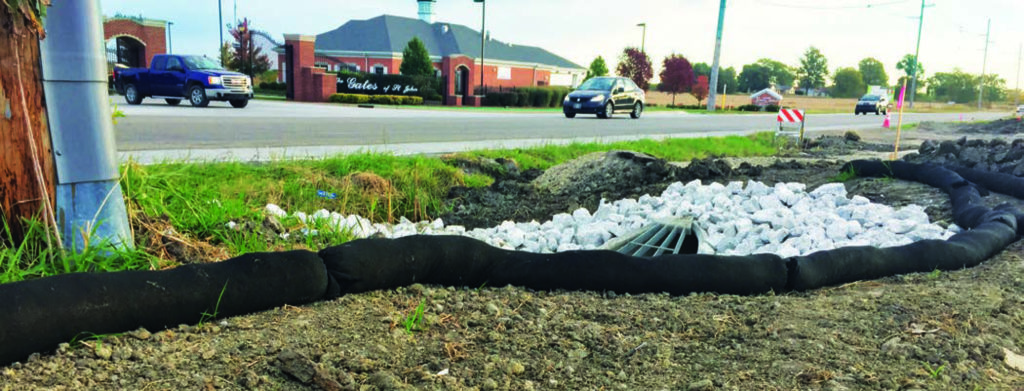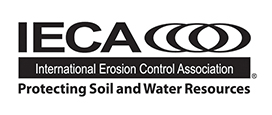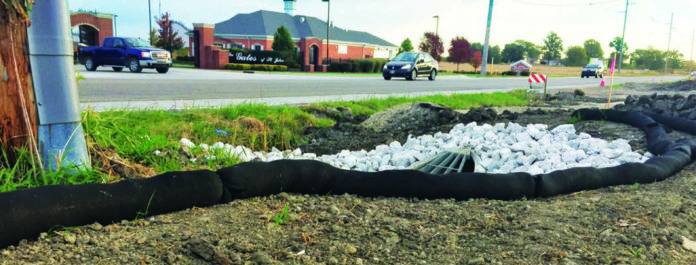HOW CONSTRUCTORS USE ADVANCES IN TECHNOLOGY TO SUCCEED
By Joe Moore, MS4 CECI
Since the inception of the Clean Water Act in 1972, businesses, regulators, engineers and constructors have been attempting to work in concert toward one goal: clean water. The challenges spread far and wide, and there are differing degrees of what clean water looks like. From chemical removal to proper storage and detention systems, to the separation of combined municipal sanitary and storm sewers, our construction industry has been challenged. Constructors have taken on the role of being pollutant removal superheroes. While being a constructor is tough, being a cost-conscious champion of the environment at the same time is even tougher.
In the history of construction, the evolution of a job site has only advanced in terms of detail. An increase in these details has created a more demanding workplace for constructors. In today’s world, constructors are the bond that holds together an engineer’s specification, a manufacturer’s product installation and a regulator’s rulebook. Constructors act as the interpreter of the rules. From countless specifications and installation techniques for thousands of products and product lines, a constructor’s library of knowledge is their key to success. The Clean Water Act has forced state and municipal regulation constructors to accept a new level of responsibility. Pollution control, erosion prevention and sediment control have all become key focal points.
Real-world struggles on-site often lead to creative solutions. The winning ideas are often found using experience and field observation, trial and error until they are refined into solutions that work. Constructors have been some of the best innovators to date. Thomas Edison, Nikola Tesla, Alexander Graham Bell, Benjamin Franklin, Thomas Jefferson, Henry Ford, Beulah Louise Henry, Maria Telkes, Stephanie Kwolek and Alfred Nobel were all constructors of sorts and the innovations that they brought to our world changed it forever.
To successfully resolve challenging problems at any level, one must dive into the details. In the case of sediment control, the details are minuscule and scientific. This can be an uneasy situation for constructors. The regulators and the engineers that constructors work with daily delve down to each diminutive detail to keep our water clean. Those same constructors have a natural disposition of asking the question of “why” and creating the solution of “how.” Those who can answer that question of “how” have often led the charge in innovation.
As a result, an entire stormwater industry has been created. It consists of engineers, manufacturers and constructors all racing to the challenge of finding the best solutions in pollution control. There is a laser focus on scientifically proven results, and the industry is shifting toward using these very details given to us by science and field observation to continue to innovate products that work.
Sediment is scientifically defined as matter that settles to the bottom of a liquid. This sounds fairly simple. Sediment has
also been identified by regulatory agencies as the largest source of pollution in our regulated waterways. Constructors, agriculture and industry all knowingly and unknowingly participate in creating that pollution, and constructors and industry have been challenged through regulation to “clean up the act.” How do they do this?
The science of water can be simple. Does the pollutant— sediment in this instance—weigh more or less than water? Does it float, suspend or sink? What scientific theories can we use to separate sediment from water? Settling or filtration? What do we know about physics? If we slow down the water enough, does the loss of energy in the water allow sediment to accumulate? Most importantly: What tools can we as constructors use to stop the pollutant from leaving the site?
Silt Fencing
A silt fence, sometimes (misleadingly) called a “filter fence,” is a temporary sediment control device used on construction sites to protect water quality in nearby streams, rivers, lakes and seas from sediment (loose soil) in stormwater runoff. Silt fences are widely used on construction sites in North America and elsewhere, due to their low cost and simple design. However, their effectiveness in controlling sediment can be limited, due to problems with poor installation, proper placement and/or inadequate maintenance.1
Like the hammer in construction, silt fence was one of the first proprietary sediment control devices to hit the market, and the scientific theory behind it was simple and consistent: slow the water down enough through a structural damming practice and the sediment will fall out of suspension as the water passes through or around, or is infiltrated or absorbed by the ground.
To constructors, engineers and scientists, this theory made sense and a star was born. Regulators and engineers had an answer, and constructors had a new sustainable way of controlling sediment from leaving their sites. Engineers began designing sites with the inclusion of silt fence. As regulators pushed for compliance, hundreds, thousands, then hundreds of thousands of lineal feet were installed. Today, hundreds of millions of lineal feet have been installed. Finally, designers, engineers, constructors and regulators had an answer to their problem, and it was quite simple.
However, in time, the innovative constructors, engineers and scientists begin to refine technology and theory in a search for better results. While silt fencing has become the most often used technology in the industry, there has become a race to the top for manufacturers to design a cost-effective solution that keys in on and eliminates some of the high-maintenance aspects of fencing mentioned in the above definition.
In time contractors have become inundated with regulatory inspections. Controlling sediment on-site has become as important as safety. Sediment control is one of the only phases of construction that has exposure to federal, state and municipal regulators. For constructors, that regulatory compliance comes with a cost and a real need for a consistent inspection process and devices and practices that they can count on.
The everyday frustrations that can come with installation and, more importantly, maintenance of these types of products is what has driven the recent push in innovation. Innovators now have the ability to openly test products using scientific theory and standardized ASTM testing practices to understand their products and their effectiveness at capturing sediment as well as other job site pollutants.
Enter: Fiber Rolls
A fiber roll is a temporary sediment control device used on construction sites to protect water quality in nearby streams, rivers, lakes and seas from sediment erosion. It is made of straw, coconut fiber or similar material formed into a tubular roll.
Solving the maintenance issue equates to solving the cost issue for contractors, and in the past decade, scores of tubular devices have hit the market. Originally these devices were used as an alternative for check dams. These devices are proving to have very high sediment retention effectiveness, minimized maintenance costs and versatility, and are readily available to the contractor. Engineers and enforcement have begun the process of opening up the toolbox for constructors.
Many of these product lines vary greatly in size, shape and form, and the technology in the fill material is key to optimal performance. There are filter sock/fiber rolls that are even offering hydrocarbon removal coupled with additional filtration benefits. More so, this is all happening at a relatively low cost to traditional silt fencing programs.
There are multiple challenges in the industry partly because the technology is changing faster than regulation and specification manuals. As fiber roll technologies continue to hit the market, leading manufacturers have become reliant upon standardized testing protocols to compartmentalize product performance. Constructors, engineers and regulators have the challenge of staying on top of the science to understand the differences in fill material technologies and more importantly, results.
As the fast-paced race to the finish line progresses, standardized ASTM testing statistics are driving advances in technology. The technical aspects of capturing microscopic pollutants are being supported by data that is now available through testing. Information is being compiled and shared as the push for education and sediment control intensifies.
Fiber roll and filter sock technology have become the “nail gun” in the sediment control industry as the materials have proven to be more efficient, versatile and cost-effective. Constructors, engineers and regulators are becoming more familiar with the sediment and pollution retention benefits of filter sock technology, and the road is being paved for better results in terms of capturing and retaining sediment. As a result, we are all becoming better stewards of our environment.
About the Expert
Joe Moore, MS4 CECI, is managing partner for Siltworm Inc. Moore has extensive experience working in the erosion control and construction industries.
References
(1) Sprague, C.J. (1999). “Assuring the E ectiveness of Silt Fences and Other Sediment Barriers.” Proceedings of Conference 30, International Erosion Control Association, Nashville, TN. pp. 133-154.








